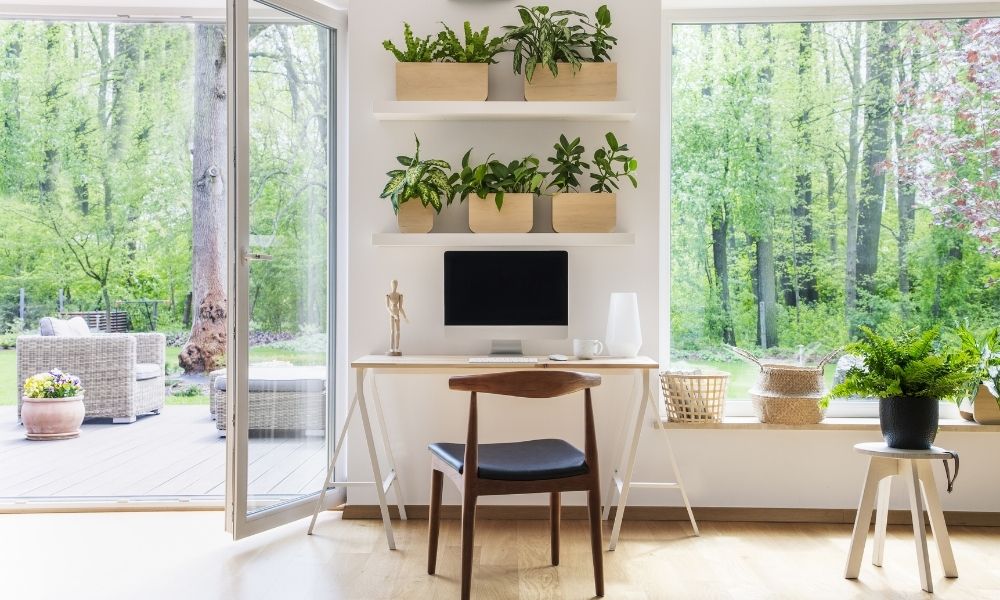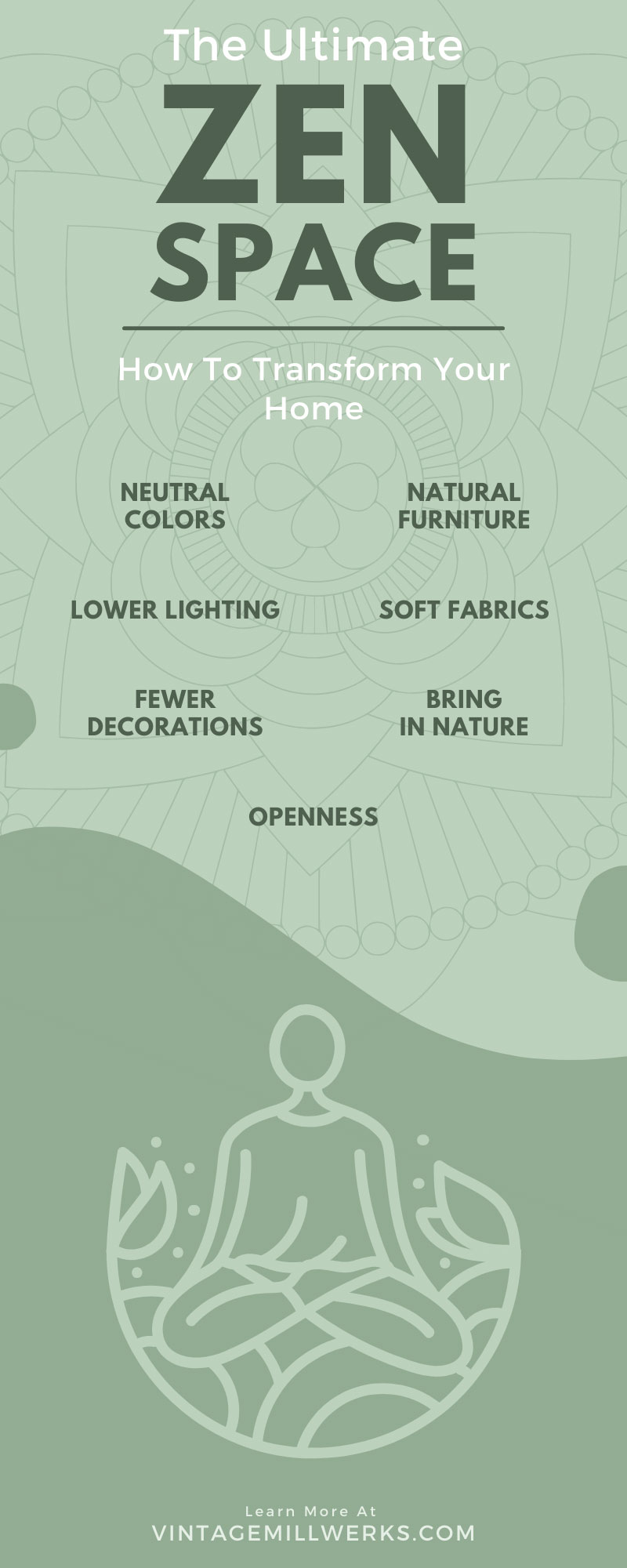
People have very different ideas about what they want in a home, and there’s nothing wrong with choosing one style over another. It all depends on what you want in your house. However, one popular style that helps create calmness for lots of people is a Zen space.
What Is Zen?
Zen isn’t an easy thing to describe, as it comes from a Japanese translation of a Chinese word that was originally in Sanskrit. But, the basic ideas surrounding “Zen” consist of meditation, centering your mind, self-restraint, and eventually becoming a better version of yourself through control of yourself. A Zen space is an area that helps promote these goals, eliminating distractions and only accommodating things that help with your meditative lifestyle. Creating a Zen space is about mixing in natural things to create a place you can focus on training yourself. If you need help creating this Zen space, read this simple guide on how to transform your home into the ultimate Zen space.
Neutral Colors
Start with the color pallet of your home, paint your walls, and get furniture that matches softer earth tones. These colors will help keep you grounded and keep your place looking pleasant but not distracting to you.
Natural Furniture
You want to do your best to avoid getting furniture that doesn’t use natural materials. Aim for furniture made from things you can find, such as wood or stone. This will help you match your neutral colors and keep consistent with the Zen theme. Local furniture, such as American-made wood furniture, can fit perfectly with the Zen space.
Lower Lighting
Harsh bright lighting can subtract from the natural beauty of a Zen space. It’s best if you try to use as much natural lighting as possible. But you can do other things. For instance, you can maintain a high number of lights but switch out bulbs for softer versions that won’t drown out the room’s natural colors.
Soft Fabrics
Just like the furniture, natural fibers make for great additions to Zen spaces. This includes any sheets or blankets you have. You should also have softer materials, as they help you relax and focus more. Try to keep the colors neutral and earthy, just like the rest of the space.
Floors With Give
Many different floor styles can fit a Zen space, from carpets to softwoods to bamboo floors. You want to look for softer floors because hardwood or tiles create a different feeling to the home that doesn’t mesh well with a Zen space. Any flooring material with a bit of give when you step on it is a good choice for a Zen space.
Fewer Decorations
This feature in Zen spaces can take a while to adjust to, as artwork and decorations line the walls and shelves in many homes. However, these decorations are distractions from the blankness that a Zen space aims to achieve. This doesn’t mean that you should have no decorations; things that fit the natural theme of Zen can be great adornments. Lots of Zen places use water features or meditation tools as central features in each room.
Plants
One of the most popular things to put in a Zen space is plants. The growth and life of a plant are very symbolic and worth meditation and thought. The controlled growth of a bonsai tree is a great example of a Zen meditation practice that helps someone practice and deepen their understanding of self-restraint.
Electronics
One of the more obvious things you can do is eliminate as many electronics from your Zen space as possible. Constant engagement with devices like TVs and computers directly opposes Zen ideals, though there’s something to say about balancing the two. At least in your Zen area, try to remove any devices that create noise or might distract you.
Scents
People often ignore the scent of a room, as they don’t see it as important. However, a good Zen space will utilize scents to create a better environment for mental practice and meditation. Look to invest in scents that calm you and that match nature. Many people like essential oils or scented candles, but you should experiment to find the scent that calms you the most.
Bring in Nature
Sunlight and plants are tranquil mood-boosters. Including nature within your home is a great way to augment your Zen space. Large open windows or doors to the outside and decorations that come directly from nature can elevate your Zen home. Numerous people swear by water fixtures or aquariums, as the water creates a calming sound, and the fish only make it more natural.
Openness
You need to remember to keep the area open throughout the entire process of designing your Zen space. You want to keep a Zen space open. This way, it can reinforce the same idea in your mind. Zen culture focuses on leaving space clear to help you restrain yourself. You don’t need to fill the empty space, as it’s serving its purpose as it is. Zen is about minimalism and limiting what you own to control the home better.
Clutter
Along the same lines as the emphasis on openness, you also need to rid yourself of any clutter in your Zen home. You can’t have piles of random possessions in a Zen space, as they’ll weigh down on you. Your goal is to focus on yourself and become as introspective as possible in your house. Things that separate you from the focus you need to look at yourself don’t fit in a Zen space. It’s about truly finding yourself and bettering yourself until you become a more virtuous person. Clutter will just hold you back.
This is just a simple look at what constitutes a Zen space and doesn’t encompass a holistically Zen lifestyle, as it includes more than just the home in which you live. But this guide on how to transform your home into the ultimate Zen space will help you create a place that allows you to achieve that Zen lifestyle that many people find works for them.


